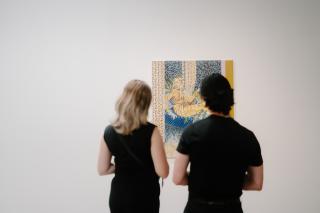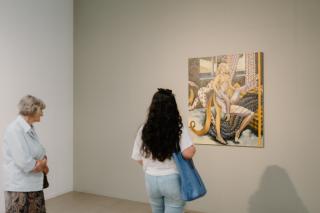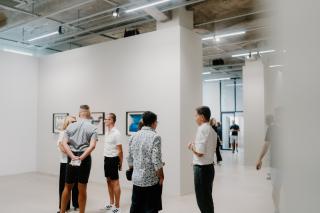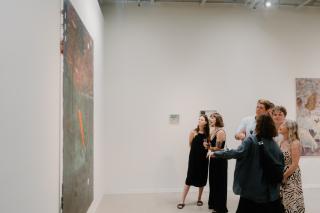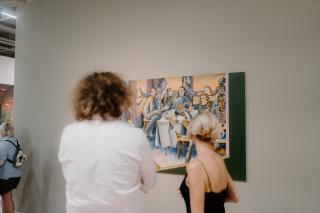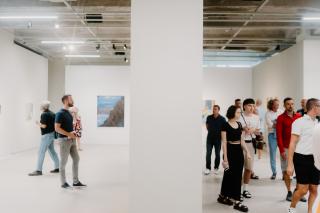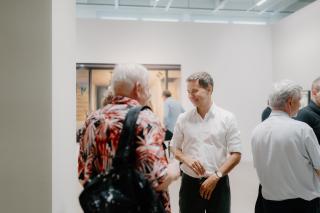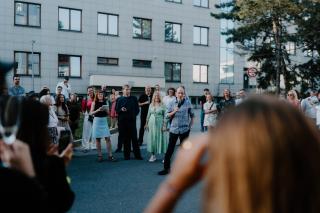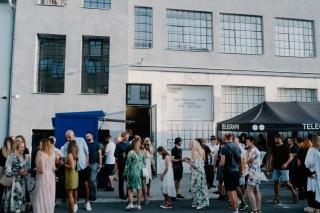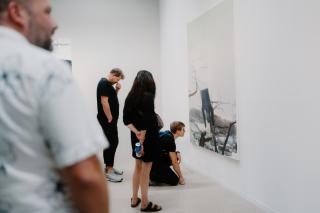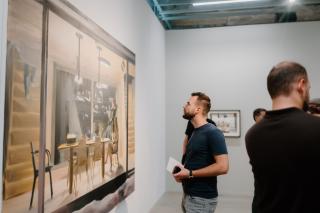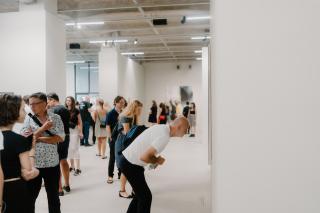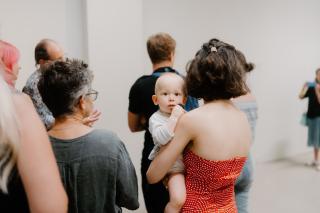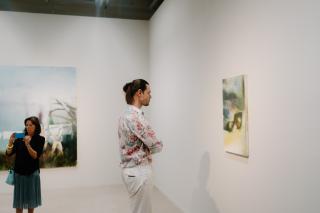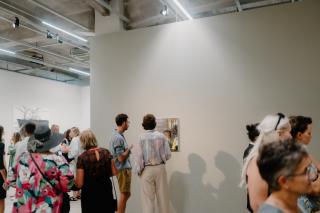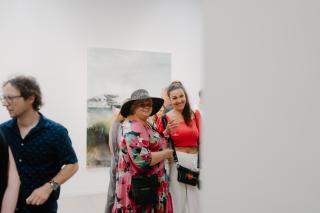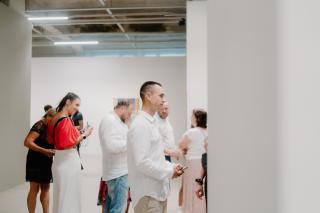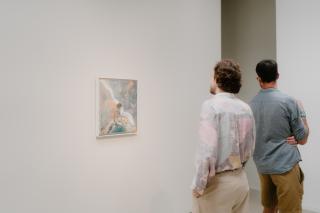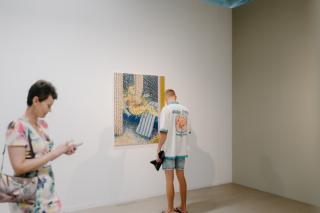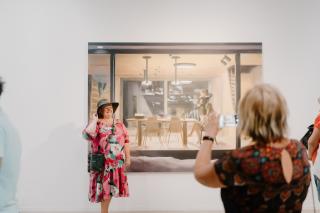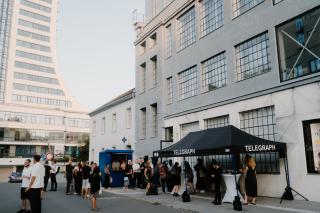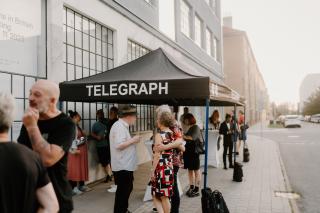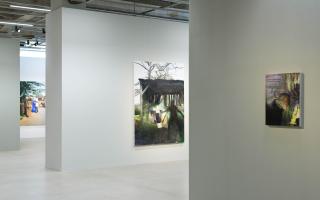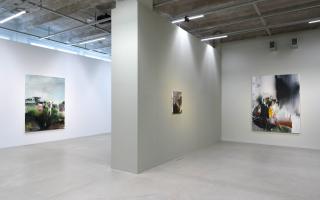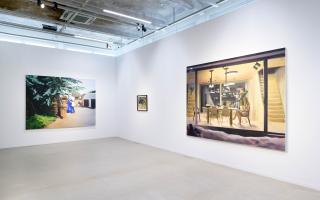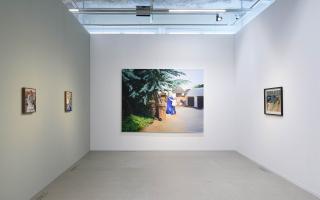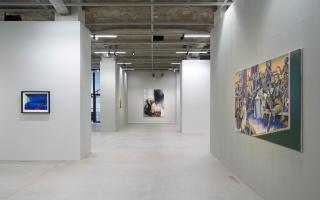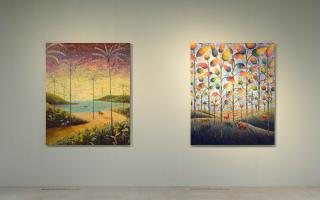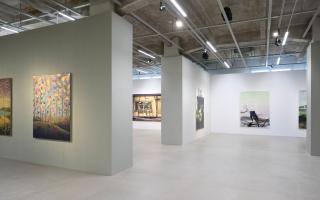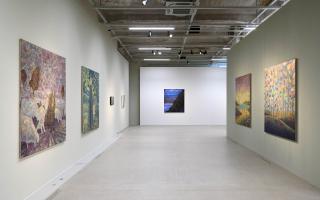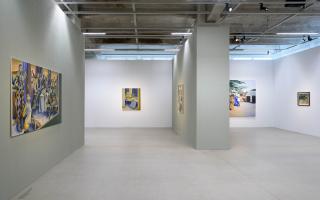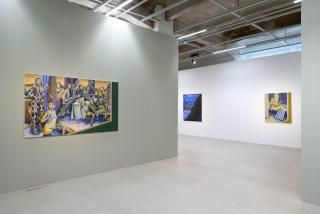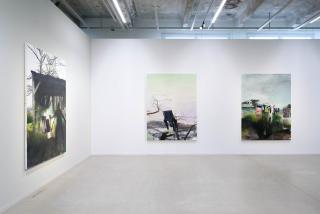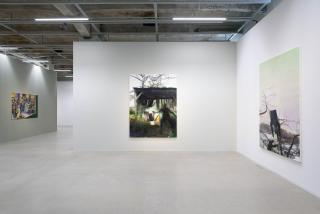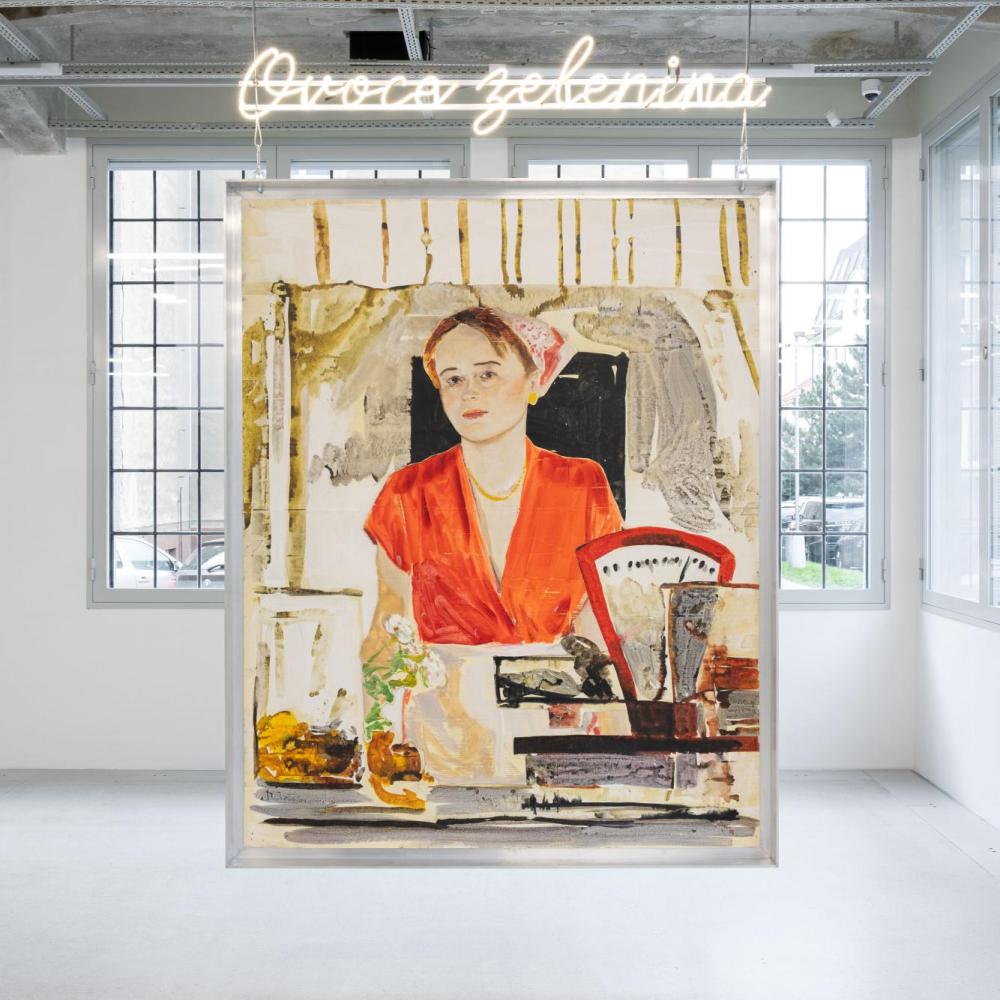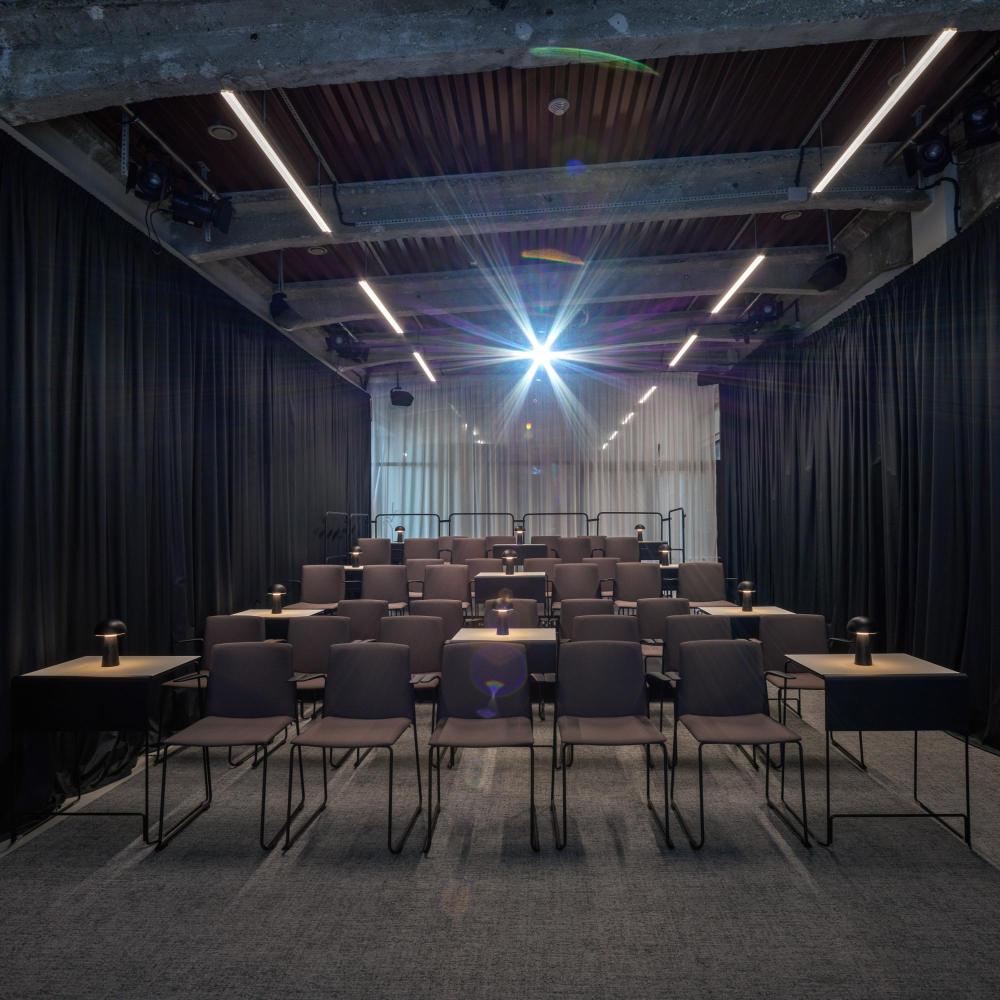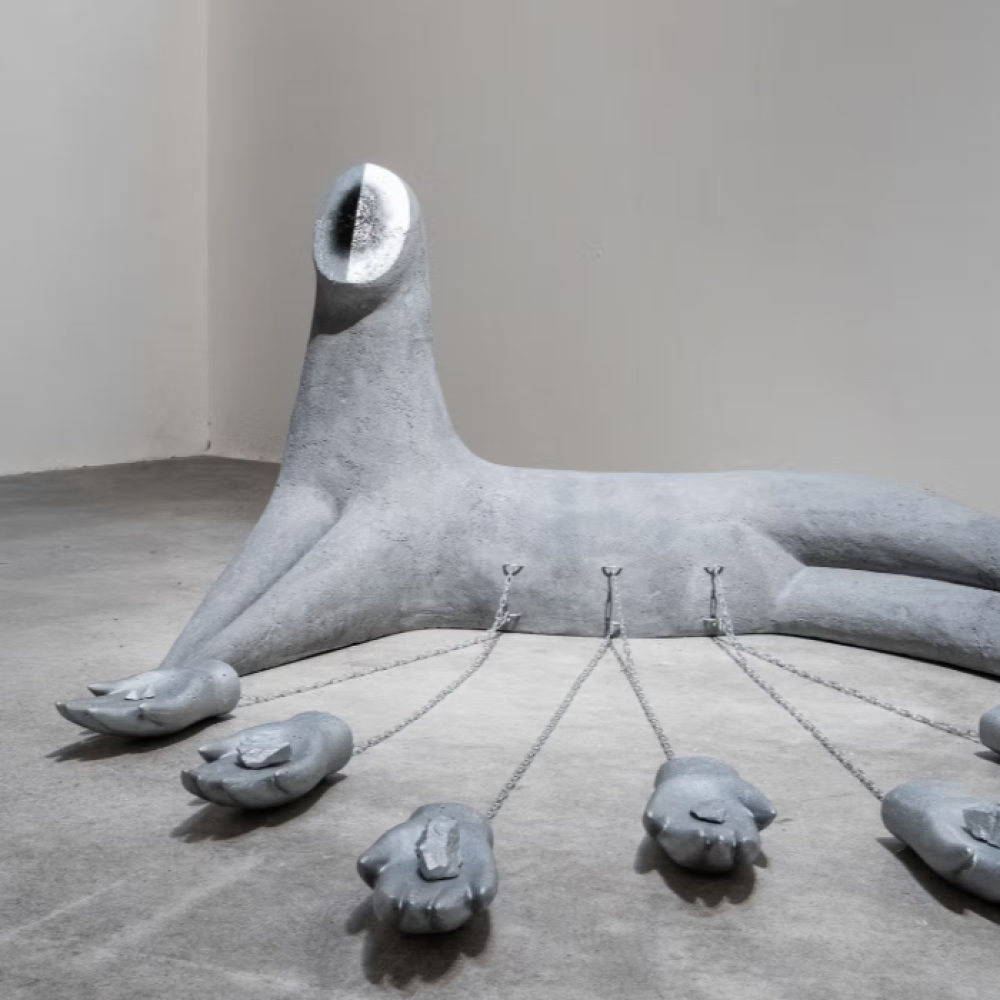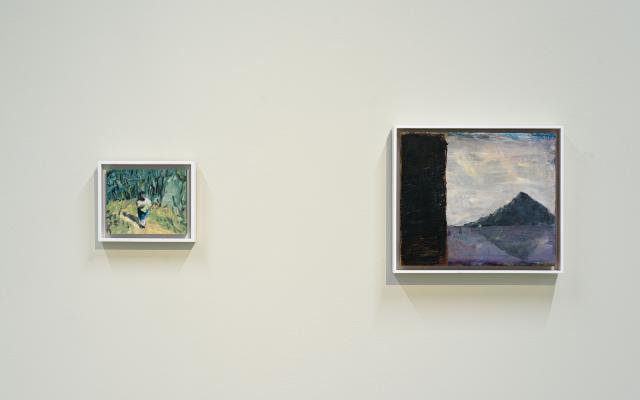
The exhibition New Positions in British Painting, opened on 24 August at the Olomouc Telegraph, presents five contemporary British painters who represent current trends in British painting. One of these artists is Tom Anholt, who stands on something of a frontier of British painting. Although he was born in Bath, UK, in 1987, he has lived and worked in Berlin for many years and it is his German painting history that has also had a considerable influence on him.
Anholt was born into an artistic family, and he followed in their footsteps, graduating from Chelsea College of Art and Design in London, before pursuing art full time. Today, he has already had a large number of exhibitions, both group shows, such as Trace Evidence at Badr el Jundi in Marbella, Spain (2021), Known Unknows at Saarchi Gallery, London (2020), and Gifts for you at EIGEN + ART Gallery, Berlin (2019), and solo exhibitions, among which are the exhibitions Blue (2019) and Artificial Light (2021) at Mikael Andersen Gallery in Copenhagen, Notes on Everything at Josh Lilley in London (2020), Close to Home at the aforementioned EIGEN + ART gallery in Berlin (2021), and Vom Leben (2019) at the same gallery in Leipzig. He has also had non-European exhibitions at François Ghebala in Los Angeles and at the Hakgojae Gallery in Seoul.
Tom Anholt's way of working tends towards a postmodern synthesis of styles, which is also characteristic of contemporary art. A number of approaches and techniques are interwoven in his work, which, in his own words, he abandons once he has completely mastered and moves on to further exploration and experimentation. He believes that this is the best way to trace the artist's gradual process of development over time. In his work, we find a number of positions, such as the colourful watercolour dissolved figures on paper around 2020, and at other times expressionistic drawings with a background of sharply cut mosaic patterns contrasting with figurative elements. Other times it is a surface densely filled with heavy paint, but also the creation of collages from scraps of old canvas.
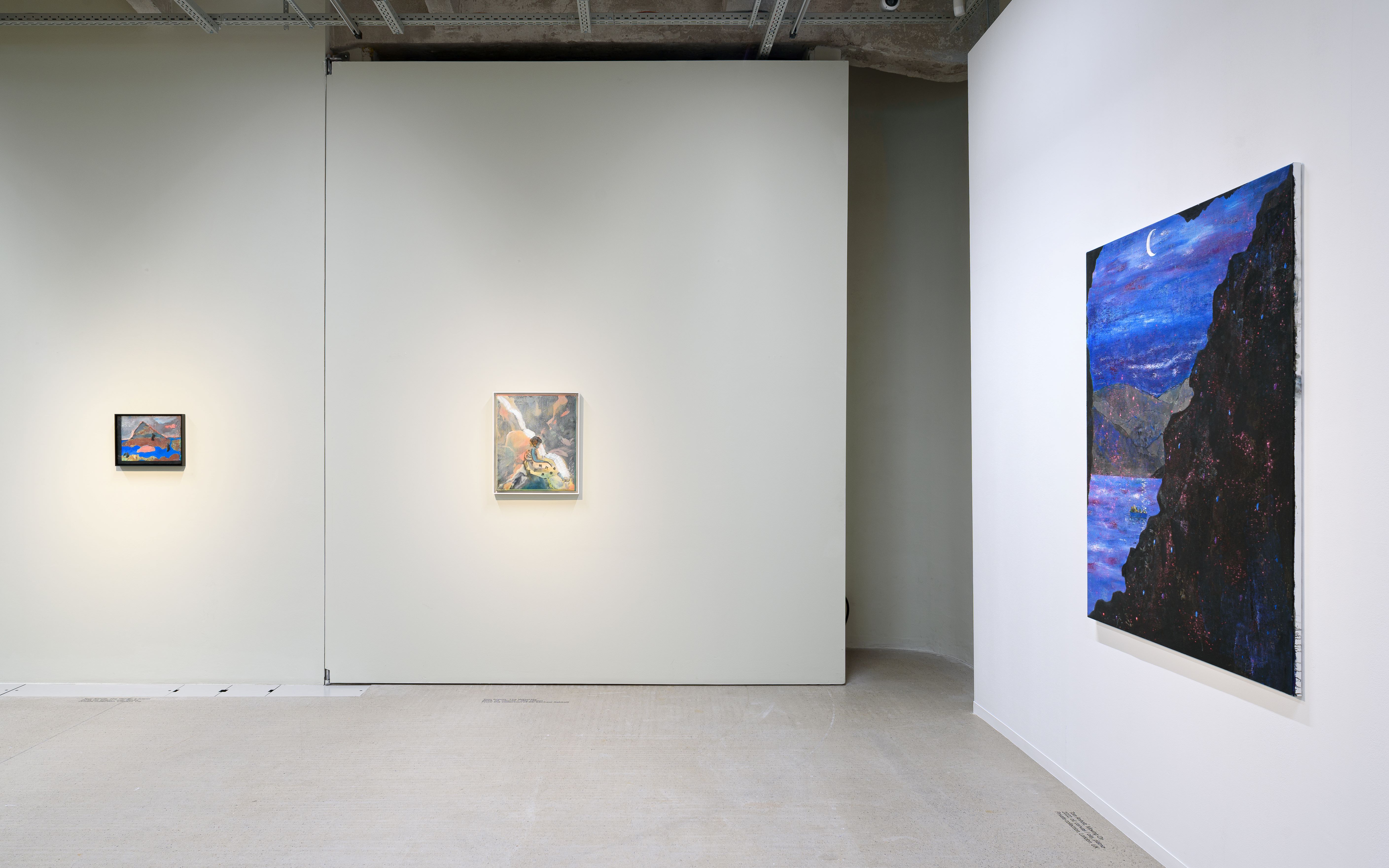
He doesn't shy away from his many inspirations in his work, constantly trying to be influenced, and believes that painting is a collection of the artist's influences, desires and fears that are constantly being added to or subtracted from. Sooner or later, everything is reflected in the creative process. In Anholt's works, for example, we find the strong influence of German Expressionism, which he naturally embraced along with German history when he moved to Berlin. However, his paintings also reflect the qualities of early Renaissance painting, and he also refers visually to Persian miniatures. A number of his paintings evoke different materials in their effect, for example, appearing as tapestry, wood or parchment. In the children's books for which he creates picture companions, he turns to myths, legends or fairy tale themes. With its apparent simplicity, the chaotic geometric patterns in the background, and the frequent two-dimensionality already mentioned, Tom Anholt's style looks just like a kind of fairy-tale fantasy world, but his characters are thoughtful, dealing with existential questions with their eyes fixed on something distant, standing alone in an open space. They do not always experience this isolation as something negative; it is not only loneliness, but also contemplation - subtle and intimate moments of being, not only darkness but also light.
For the exhibition New Positions in British Painting, two larger canvases from 2022 have been selected from Anholt's oeuvre, alongside four smaller formats from 2013-2016. The standout image is King in Exile (2022), a lone figure leaving the city in a storm, the background of the fantasy landscape rendered in dark colours from which the king's red cloak stands out as a shining point, all overlaid with raindrops through which the viewer peers into the painting. The painting Moving On (2022) has the same effect. From behind a rock, we peer out onto a moonlit expanse of water, on which, on closer inspection, we can see a small boat with a lone rower. These large canvases are complemented by two smaller depictions of islands - The Island VI (2014) and The Painter's Island (2016) both rendered in denser, pastel colours, non-specific shapes and a darker tone. The last two paintings in the exhibition again depict isolated figures, but this time in real exotic landscapes, earthy colours but loose lines. The small format painting The Cook (2013) depicts a figure in a kind of dense jungle, using mainly shades of green. The Waterfall (2013) then depicts a contemplative figure sitting on a boulder at the base of a waterfall. The colours this time are very subtle, grainy, all as if covered by a misty haze of splashing water droplets.
By Barbora Langová / Telegraph Gallery
